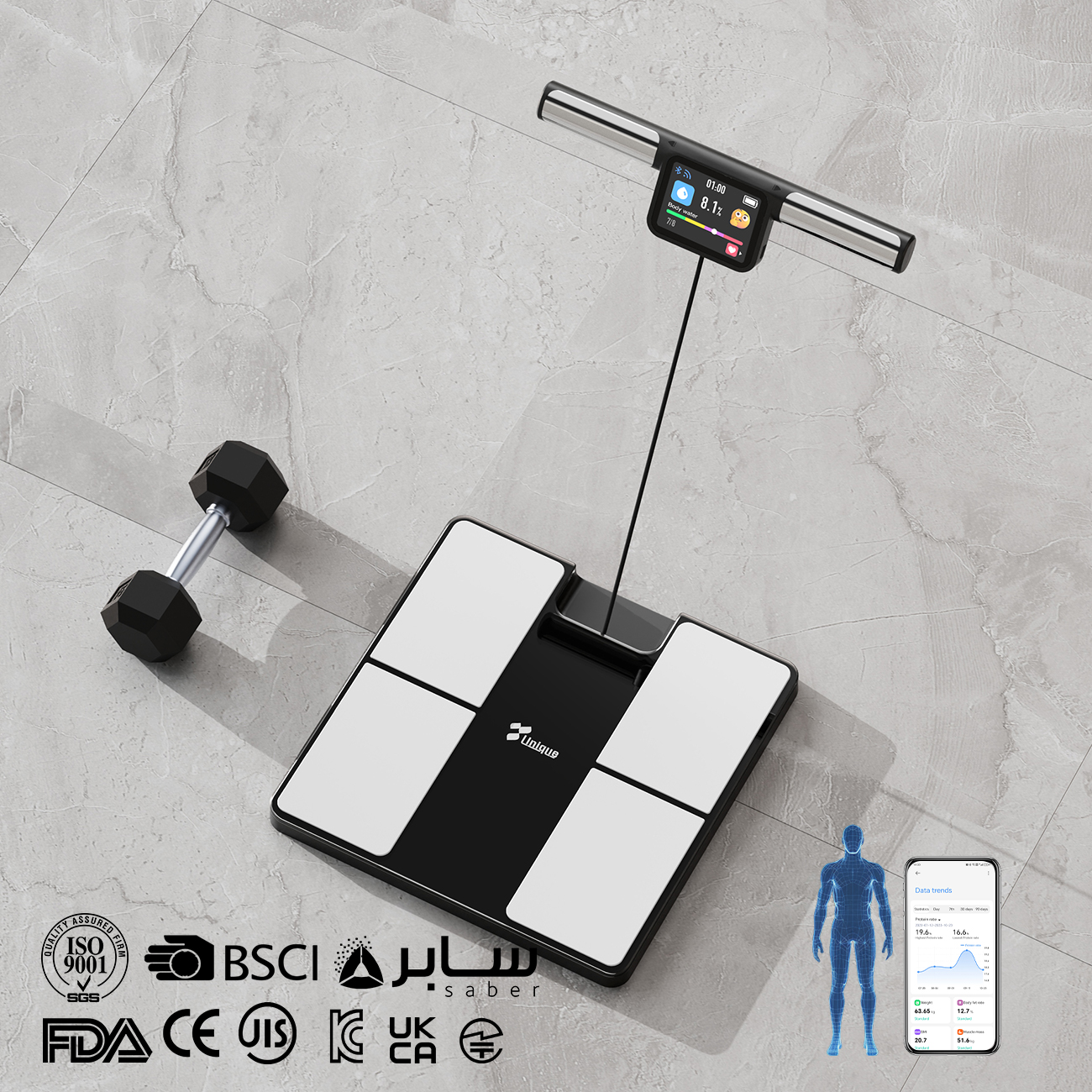How Do Body Fat Scales Work?
Body fat scales, also known as bioelectrical impedance analysis (BIA) scales, estimate body fat percentage and other body composition metrics using a specific scientific principle. Here’s a detailed breakdown of how they work:
Core Principle: Bioelectrical Impedance Analysis (BIA)
At their core, these scales measure how easily an electrical current travels through your body. The key idea is that different body tissues conduct electricity differently:
1.Lean tissues (muscle, organs, blood) contain more water and electrolytes, making them good conductors of electricity (low impedance).
2.Fat tissue has less water and fewer electrolytes, so it resists the electrical current more (high impedance).
By measuring this resistance (or "impedance"), the scale uses a built-in formula to estimate your body fat percentage.
Step-by-Step Process
1.Sending a Mild Electrical Current
When you step on the scale, metal electrodes (usually on the platform where your feet touch) send a weak, safe electrical current through your lower body. The current is too low to feel—you won’t experience any shock or discomfort.
2.Measuring Impedance
The current travels through your legs, pelvis, and abdomen (since these are the areas in contact with the scale). The scale measures how much the current is slowed down (impeded) as it moves through different tissues.
3.Calculating Body Composition
The scale uses the impedance data, along with information you input (like age, gender, height, and sometimes weight), to plug into a pre-programmed formula. This formula estimates:
Body fat percentage
Muscle mass
Bone mass
Water weight
Sometimes metabolic rate or visceral fat (depending on the model).

Limitations vs. Benefits
1.Limitations: They are estimates, not precise measurements (compared to medical tools like DEXA scans or hydrostatic weighing).
2.Benefits: They are affordable, easy to use at home, and can track trends in body composition over time (e.g., whether your body fat percentage is increasing or decreasing).
In short, body fat scales work by using electrical impedance to estimate body fat, but their accuracy depends on various factors. They are best used for tracking long-term changes rather than getting exact measurements.













